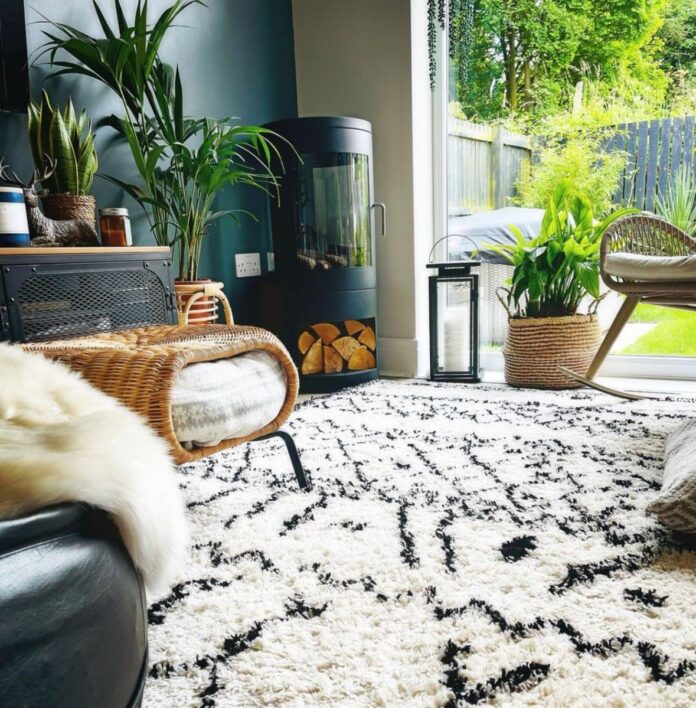Imaginfires (https://www.imaginfires.co.uk/), a leading innovator in eco-friendly heating, offers ten alternative home heating methods that promise to keep homes toasty while reducing energy costs. With the UK’s commitment to greener living, including the planned ban on gas boilers by 2025, now is the time for households to consider switching to sustainable heating options.
Why Alternative Heating?
With gas central heating becoming more expensive and environmentally damaging, many seek ways to lower their bills and carbon footprints. But what’s the best solution for keeping your home warm during these freezing conditions, especially if you live in an older, poorly insulated house?
Whether you’re looking for quick home heating hacks or more substantial upgrades, here’s a glimpse of the most effective ways to retain heat and reduce energy use:
Insulation:
Most houses lose over 25% of their heat through the roof, so always check your loft first. Loft insulation should be at least 25 cm thick. You can also add additional insulation to your walls and floors. It is more expensive to install than the roof, but you’ll reap the benefits quickly. Over a third of heat is lost through walls, but you can save £160+ a year on your energy bills from cavity wall insulation. Older properties – pre-1920s – are notorious for having minimal insulation.
Draught Prevention:
If your front door has visible gaps around the frame, you’ll need a door seal. Stores like ScrewFix sell these online for under £20. For internal doors, try placing a padded draught excluder at the base. These are effective at retaining warmth in the room. Window seals, foam, or strips can also prevent window drafts.
Thermal Curtains:
Bedrooms are ideal for hanging thermal curtains, as we mostly draw them at night. They help keep the warmth in your room, meaning that you shouldn’t need your central heating on overnight. Upgrading your current curtains to thermal curtains can reduce heat loss by 25%. They are easy to source from most homeware stores and affordable.
Bioethanol Fireplaces:
Bioethanol fireplaces are a clean, safe way to heat a room without gas. They are quick to install, don’t require a chimney, and don’t emit harmful smoke or fumes like traditional log burners.
Underfloor Heating:
Electric underfloor heating distributes heat evenly across the room. It also offers much better temperature control than traditional radiators. This means that you won’t need to use it as often. And the room should stay warmer for longer, lowering your energy bills by up to 15% annually.
Smart Thermostats:
Now is the time if you’ve not installed a smart thermostat yet. They are intelligent enough to learn the patterns of your home. This means your heating will only be used when the house is occupied. You can also pre-set your schedule or use your phone to kick-start it when you’re on the go. Hive thermostats can save you up to £110 annually. Google says users of the Nest device have saved between 8% and 16% a year.
Solar Panels:
Looking for the best green alternatives to gas central heating? Solar panels are one of the most eco-friendly options. They work by converting sunlight into energy using inverter technology. However, don’t expect to get your entire hot water supply from solar panels. They generally supply around 50% of average-sized households. And it could be less depending on the weather. So, you’ll still need an additional heating source to supplement this.
Heat Pumps:
Harnessing natural heat from the air, these devices provide three times more heat than traditional heaters, making them both eco-friendly and cost-effective.
Biomass Boilers:
These boilers use wood pellets instead of fossil fuels, offering a sustainable heating solution. However, they may be too large to fit into smaller homes. They also require a vent, which could make installation tricky if you don’t have a chimney.
Infrared Heating Panels:
The new kid on the block. You might be used to seeing infrared heating whilst in a pub garden or outdoor restaurant. But you can now install them in your home. Unlike most heating sources, they don’t need to heat the whole room. They work by heating objects so you will feel warm even if the air in the room is cold. Installation is also super affordable. Costing roughly the same as installing an electric radiator.

| [donate]
| Help keep news FREE for our readersSupporting your local community newspaper/online news outlet is crucial now more than ever. If you believe in independent journalism,then consider making a valuable contribution by making a one-time or monthly donation. We operate in rural areas where providing unbiased news can be challenging. |


















